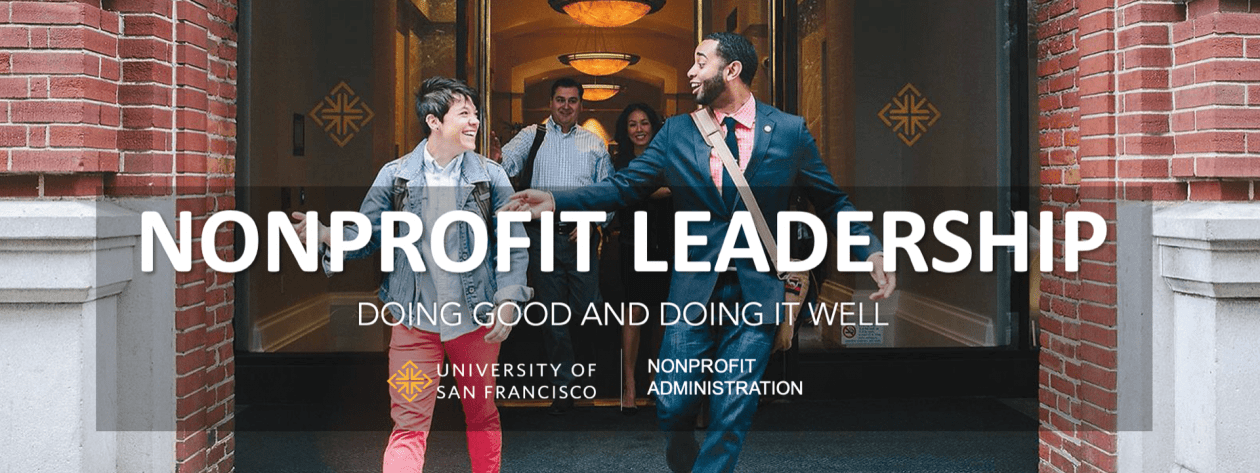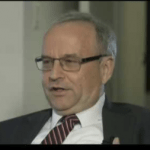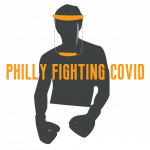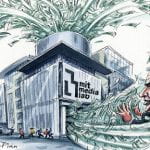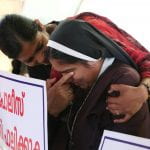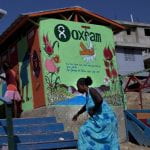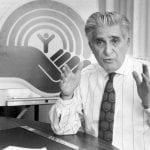Nonprofit organizations (NPOs) are held to higher moral standards. Because their social and community values associated with their missions, NPOs that commit unethical or illegal activities make us have more resentments towards them. Although the nonprofit sector incorporates all the values and failures of any other businesses and organizations, the public has entrusted these special types of organizations with a mandate to “do good and do it well.”
In the MNA program, we believe that leadership and ethics are at the core of our learning and our dedicated careers for the social sector. Hence, our graduate students learn and reflect on the proper behaviors by analyzing unethical and illegal case studies and the reasons that brought such individuals and organizations to act against their public mandate.
ABOUT ETHICAL LEADERSHIP
Ethical decisional making and integrity leadership go beyond the nonprofit sector. They are part of our societies and there are many cases across sectors. Some they across the sector-boundaries as they present social values as in for-profit enterprises and socially innovative startups. The well-known scandal of Theranos and Elizabeth Holmes in Silicon Valley illustrates how a good mission could be corrupted by unethical (often illegal) behaviors. This is a case study overview prepared by Dr. Marco Tavanti as examined in his MNA, MBA, MPA ethical leadership, social entrepreneurship and social business related courses.
NONPROFIT UNETHICAL CASE STUDIES
The following are examples of the case studies we identify and analyze during our graduate studies. We share them with the public in the hope of promoting more ethical practices and avoid unethical and illegal pitfalls in our mission-driven works.
Legal & Ethical Disclaimer
We recognize that the image of the involved organizations may be compromised or not appropriately or currently depicted in the follow case studies. Although the cases are documented from publicly existing media and other information they do not intend it to be material for legal disputes. They are simply created by the graduate students for the education of the community to become better nonprofit ethical leaders. They are made public here through this blog conscious of their limited portrait of other positive and ameliorated aspect of the organization(s). We want to educate the sector and the public to avoid toxicity, abuses and unethical behaviors in nonprofit organizational leadership to promote and preserve the collective values provided by the many nonprofit champions and ethical leaders out there. These studies are presentative of the Freedom of expression at the University of San Francisco includes the right of USF-MNA students to present and advocate their ethical concerns in the spirit of community development, professional knowledge and the quest for truth and social justice. If you have some concerns or suggestions feel free to contact Dr. Marco Tavanti, Nonprofit Ethical Leadership Professor at University of San Francisco – School of Management – Master of Nonprofit Administration.

The Cases include a document analysis with the description of the case and a presentation with a video illustrating the case and/or issues. The Cases are sorted by date of publication starting with the most recent ones. The Nonprofit Un-Ethical Case Studies by Marco Tavanti and MNA Students is licensed under a Creative Commons Attribution-NonCommercial 4.0 International License.
 Suggested Citation: General format for citing case studies in APA style: Author(s). (Year). Title of case study. Number of case study. URL.
Suggested Citation: General format for citing case studies in APA style: Author(s). (Year). Title of case study. Number of case study. URL.
Example: Davidson, A. & Faria, V (2017). Wounded Warrior Project: Using Veteran Pain for Executive Gain. USFCA-MNA #2. https://usfblogs.usfca.edu/nonprofit/ethics/
________________
Princeton and the Robertson Foundation: The Ethics of Donor Intent. Case study by Ben Thompson and Martin Alkire.
In 1961, Marie Robertson created the Robertson Foundation for the benefit of Princeton University. This foundation was not a family foundation; it was run by a foundation board controlled by Princeton. The foundation was created for the specific stated purpose to support Princeton’s Woodrow Wilson Public Affairs Graduate School in preparing students to enter government service. Over the years this original $35 million gift had grown to over $850 million. Princeton University had, according to the Robertsons, used foundation assets to support other non-Woodrow Wilson Public Affairs Graduate School Princeton programs. The Robertson family objected to this ‘misuse’ of the original gift, and sued Princeton. The case was settled after many years, $40 million in legal fees, and resulted in the dissolution of the original Robertson Foundation. Remaining foundation funds were kept by Princeton, to be used for the Woodrow Wilson Public Affairs Graduate School programs except for $50 million which was reverted to a new, Robertson family run foundation to support students pursuing careers in government service. Robertson Foundation Case Analysis | Robertson Foundation Case Presentation
Dirty Work: Ripping Out The Rot in The University of Maryland Medical System. Case Study by Sean Peterson and Shelby Dillingham (Spring 2022).
University of Maryland Medical System (UMMS) is a large university based regional health care system that operates as a private, not-for-profit organization [501(c)(3)]. UMMS serves a variety of patient bases including medicare and medicaid members. The organization operates at considerable scale, employing 29,000 staff who operate out of 12 hospitals and over 150 locations (The University of Maryland Medical System). UMMS fiscal year 2019 operating revenue and expenses were also considerable at $4.24 billion and $4.16 billion, respectively. The state of Maryland provides funding to UMMS for purposes of capital projects, allocating nearly $333 million over FY 2016 – FY 2020 (Maryland General Assembly, Office of Legislative Audits, 2020, p.7). The hospital system operates under the direction of various teams including its executive branch and board of directors. In 2019, UMMS was the subject of an ethical dilemma related to board member conflict and promotion of self-interest. A State audit on UMMS finances revealed significant financial dealings between board members and their organizations. Board members had either promoted their own companies or directly benefited from promotion of their products through their positions at UMMS. UMMS Case Analysis | UMMS Case Presentation.
Theranos: Elizabeth Holmes: Toxic Leadership. Fraud – Leading with Ego…To what cost? Case by Lamu Ryavec and Jazz Thomas (Spring 2022)
Theranos’s business model was based around the idea that it could run blood tests, using proprietary technology that required only a finger pinprick and a small amount of blood. Elizabeth Holmes said the tests would be able to detect medical conditions like cancer and high cholesterol. This gained a lot of interest from funders and future employees. Whistleblowers reported that the work environment was hostile, secretive, and employees were demanded to produce the desired results at any cost. After investigations and reports Theranos stopped operations and Elizabeth Holmes was charged with felonies. Theranos Case Analysis | Theranos Case Presentation
New Era Philanthropy or Old Con Artist Scenario? A look into the unethical behaviors leading to the fall of the Foundation for New Era Philanthropy. Francesca Cher and Alison Scott (Spring 2022).
The Foundation for New Era Philanthropy was established in 1989 to advise non-profit organizations on management and fundraising techniques. Led by John Bennett Jr., the foundation ran a Ponzi scheme from 1989 to 1995 and raised millions of dollars from over a thousand donors through fraudulent methods. New Era Philanthropy Case | New Era Philanthropy Case
 37. CENTRAL COAST KIDS & FAMILIES
37. CENTRAL COAST KIDS & FAMILIES
Founding Fraudster: The Case of Central Coast Kids & Families. Lauren Williamson (Spring 2022).
Central Coast Kids & Families was founded to provide in-home respite care and in-school aides for special needs students. The nonprofit was discovered to be over-billing nonprofits, schools, and districts in-need of these services for unprovided hours and employees. The Executive Director that founded the nonprofit was also embezzling funds over $675k for her own personal consumption. Upon discovery of this, the Executive Director then attempted to evade investigators by providing incomplete information and changing the nonprofit’s status to a for-profit. Despite her efforts and claims of innocence, she was found guilty of all charges. Central Coast Kids & Families Case Analysis | Central Coast Kids & Families Presentation
36. OVERLAKE MEDICAL CENTER & CLINICS
Unethical Distribution of COVID-19 Vaccines to Major Donors by Overlake Medical Center & Clinics. Colette Zepponi, Whitney Hofacker, and Michael Ohaneson (Spring 2021).
This case study reviews the unethical practices of Overlake Medical Center sending COVID vaccination invitations to a limited list of people, including donors and members of its board of directors. These invitations provided opportunities to register for standby access to receive the COVID vaccination in the event of any no shows. Without this special invitation, it would be impossible to register for a standby status. In response to negative feedback from the community, the hospital explained its intentions were to disseminate the opportunity to register for standby access to every email address it had on file. The hospital insists that anyone on the standby list would still be required to demonstrate eligibility based on state and local guidelines for vaccine prioritized groups. The hospital’s conduct has drawn the attention and rebuke of the Mayor of Seattle and the Governor of Washington. 36 Overlake Medical Center Case Analysis | 36 Overlake Medical Center Case Presentation
35. UNIVERSITY OF LOUISVILLE FOUNDATION
James R. Ramsey’s School for Scandal: Misappropriated Funds, Dual Relationships, and other Unethical Leadership Practices at the University of Louisville. Joseph Diaw, Matthew Rehder , Julia Parmer (Spring 2021).
This case study will examine the dangerous pitfalls of conflicts of interest in leadership practices, by exploring one such instance at the University of Louisville. We will look at the case of James R. Ramsey, a once highly regarded educator and administrator, who served from 2002-2016 as President of the University of Louisville as well as CEO of the school’s $1 billion charitable foundation. During his tenure, he faced scrutiny over a multitude of scandals, most notably steering millions of dollars from the University of Louisville Foundation into private business ventures and his own pocket. His actions went largely unchecked because of his dual roles as the head of the school and the endowment fund, a lack of administrative oversite, and the negligence of his board of trustees and other school leadership. Ramsey was ultimately forced to resign after the state governor took executive action, dissolving the board and launching an investigation into the university’s operating procedures in an effort to do public damage control and establish new guidelines to avoid future fraudulent activity at the school. 35 James R. Ramsey Case Analysis | 35 James R. Ramsey Case Presentation
34. AIDS RESEARCH ALLIANCE (ARA)
AIDS Research Alliance: The Scandal of Donnelly “Donor Manipulator” Montenegro. Will Derwin & Sarah Heraldo (Spring 2021).
This case study examines the AIDS Research Alliance (ARA) and the unethical practices of its former Chief Operating Officer, Donnelly Montenegro. ARA was a Los Angeles-based nonprofit organization founded in 1989, and later dissolved in 2015. Montenegro’s deceitful actions against the organization’s donors continued for two years after the dissolution of the ARA. This case study explores the failure of ethical leadership and the safeguarding of confidential organizational records and access. Montenegro was later charged by the Attorney General’s office and was sentenced to two years in jail for his actions against the public. 34 – ARA Case Study Analysis | 34 ARA Case Study Presentation
Too Much Brotherly Love: Vaccines Misused By Friends of Philly Fighting COVID. Connor Daugherty & Brown Gabriela (Spring 2021).
This case focuses on Philly Fighting COVID (PFC) surrounding the ethical questions of using expiring vaccines, unethical behavior of PFC executive staff as well as the lack of oversight by the City of Philadelphia. PFC was started by Drexel University students who started supporting Covid efforts by supplying PPE and then opening Philadelphia’s first “mass vaccination” site. It was designed to be unique, and worked to help vaccinate people in areas without adequate healthcare facilities. While vaccinating 20,000 people, this organization started to face issues of funding. This, combined with their lack of experience and use of the nonprofit to enrich themselves led to a path of unethical behavior. Suddenly, PFC was brought into national news after it was discovered the CEO (Andrei Doroshin) had taken vaccines and administered the vaccines to his friends. Complicating this issue was the fact that the vaccines were about to expire, and in the CEO’s words “It was better to use them than to lose them”. 33 Philly Fighting COVID Case Analysis | 33 Philly Fighting COVID Case Presentation
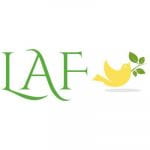 32. LITHUANIAN ASSISTANCE FOUNDATION
32. LITHUANIAN ASSISTANCE FOUNDATION
Paying for the Crime Without Any Time: Lithuanian Assistance Foundation Reaches $7M Settlement for Self-Dealing. Trish Andrews & Emma Jarvis (Spring 2021).
The Lithuanian Assistance Foundation was formed in 1991 to provide assistance to Lithuanians in need. In recent years, an investigation by the Office of the Attorney General of California found that members of the Board had been using their positions to improperly transfer donated real estate, thereby enriching themselves and depriving the nonprofit of its proper assets. In 2020, the Attorney General of California announced that a settlement had been reached with the Lithuanian Assistance Foundation and its directors. The settlement included a payment of $7,200,000 by the foundation, its directors and its officers, the dissolution of the foundation, and restrictions on certain individuals against serving on nonprofit boards in the future. 32 Lithuanian Assistance Foundation Case Analysis | 32 Lithuanian Assistance Foundation Case Presentation
31. FLORIDA COALITION AGAINST DOMESTIC VIOLENCE
Florida Coalition Against Domestic Violence: Gross Misuse of Funds Leads to Dissolution. Wes Cheung & Charis Hanshaw (Spring 2021).
This case study examines the unethical conduct and fraudulent practices of senior leadership at the Florida Coalition Against Domestic Violence (FCADV) and its associated Foundation. The FCADV began providing programs and services to support survivors of domestic violence in 1979, and in 2003 they expanded their capacity by becoming the official coordinator of government funding that supports certified domestic violence centers throughout the state. News reporting into excessive executive compensation at FCADV sparked investigations by state lawmakers that uncovered egregious systemic corruption among top leadership at the organization. In March of 2020, the Office of the Attorney General (OAG) of the State of Florida filed a Complaint comprising five counts, including a request for receivership and dissolution, against the FCADV, the FCADV Foundation, and the FCADV President and CEO, Tiffany Carr individually. The FCADV not only failed on its mission to eliminate “personal institutional violence and oppression against all people”, but the leadership of the organization intentionally acted to perpetuate it. 31 Florida Coalition Against Domestic Violence Case Analysis | 31 Florida Coalition Against Domestic Violence Case Presentation
30. MINNESOTA FREEDOM FUND
The Minnesota Freedom Fund. Ted Kuster and Anastasia Cabrera (Spring 2021).
The Minnesota Freedom Fund is a nonprofit that provides bail funding to get people who can’t afford bail released from pre-trial detention. In 2020, the fund received an unexpected flood of donations in response to the unrest following the killing of George Floyd. Questions were raised as to the honesty and transparency of the organization’s disbursement of the funds. 30 Minnesota Freedom Fund Case Analysis | 30 Minnesota Freedom Fund Case Presentation
29. BRONX PARENT HOUSING NETWORK (BPHN)
Powerlessness in the Unhoused Community: How the CEO of a New York City Nonprofit Homeless Shelter Organization Abused His Position of Power, Resulting in Allegations of Sexual Harassment and Conflict of Interest. Newsha Firoozye and Rebecca Seeman (Spring 2021).
This case study examines the unethical practices of Victor Rivera, the founder and CEO of the Bronx Parent Housing Network (BPHN) and the failure of both BPHN’s Board of Directors and the City of New York to hold Mr. Rivera accountable for his many abuses. Mr. Rivera founded BPHN in 2001 and capitalized on his compelling story of rising from a childhood spent in shelters, a youth and early adulthood spent dealing and using illegal drugs, and incarceration to become a dedicated public servant committed to helping others experiencing homelessness. 29 BPHN Case Analysis | 29 BPHN Case Presentation
 28. YOUTH POLICY INSTITUTE (YPI)
28. YOUTH POLICY INSTITUTE (YPI)
“As Long As There is Plenty, Poverty is Evil”: Anti–Poverty Nonprofit Leader Leads Youth Policy Institute (YPI) to Bankruptcy. Sara Abdel, Mariela Arriaga, Mirna Cervantes (Spring 2020).
This case study focuses on Youth Policy Institute (YPI) and reviews the unethical practices and behavior of its CEO of 23 years, Dixon Slingerland. Timeline of this case includes years of misrepresentation, hidden information, and alternative motives that involve the Democratic party. YPI’s lack of ethical leadership and financial governance proves Robert F. Kennedy correct, “as long as there is plenty, poverty is evil.” An independent audit requested by the Board identified multiple deficiencies, including Slingerland’s misuse of company funds for personal expenses and inappropriate lobbying activities since 2014 (the audit didn’t focus on prior years). The case study brings forward the different reasons why in 2019 (after 30 resilient years of service) YPI shocked the public by announcing the firing of Slingerland, hiring of a new CEO: Dan Grunfeldand subsequently filing bankruptcy. “The closure of these locations creates a tremendous void for our youth, for our families throughout the city of Los Angeles, and it’s had an incredible ripple effect everywhere in the city.”(Los Angeles City Councilwoman Monica Rodriguez, 2019) “YPI…lacked the proper financial controls and the systems needed to manage its cash flow.” (Los Angeles Times, 2019). Case-Study-28-Analysis| Case Study 28 Presentation
 27. CENTRAL ASIA INSTITUTE (CAI)
27. CENTRAL ASIA INSTITUTE (CAI)
A Surprising Comeback: The Scandalous Fall and Unlikely Rise of the Central Asia Institute. Callan Haggarty, Stephanie Sheehan, and Owen Thompson-Lastad (Spring 2020).
This case study will examine the unethical behavior of the Central Asia Institute (CAI) under the guidance of founder Greg Mortensen. After attempting to summit K2, the second tallest mountain in the world, Mortenson wrote Three Cups of Tea; the founding tale of the CAI which was inspired by his time in Northern Pakistan and the surrounding region. Mortenson founded the 501(c)(3) charity in an effort to build schools for young villagers and, “To promote education and livelihood skills, especially for girls and women, in the remote regions of Afghanistan, Pakistan, and Tajikistan” (Guidestar, n.d.). After receiving critical acclaim, including becoming a New York Times Bestseller, Three Cups of Tea and the Central Asia Institute raised millions for the cause – or so it seemed. Upon examination, it was discovered that a great deal of Mortenson’s inspirational story was exaggerated if not completely falsified. Further, Mortenson was using funds intended for the nonprofit for book tours, advertising, and personal expenses. Mortenson drew widespread criticism and was forced to step down and pay a fine. Yet, nine years after this corruption was exposed, CAI is still operating as a “top-rated” nonprofit. Case-Study-27-Analysis | Case-Study-27-Presentation
 26. BOY SCOUTS OF AMERICA (BSA)
26. BOY SCOUTS OF AMERICA (BSA)
A Scout’s Dishonor: Boy Scouts of America’s Moral Bankruptcy! Aki Amai & Rakiya Witwer (Spring 2020).
The Boy Scouts of America (BSA), an organization that prides itself on teaching ethical choices and honor code to its over 2.2 million youth members, has filed for bankruptcy court facing over 1700 abuse lawsuits. The decision to file for bankruptcy has gained harsh criticism from the public, while BSA claims this decision benefits the victims of the claimed abuses. This case study examines the BSA’s handling of the abuse claims and its decisions to file for bankruptcy. We will discuss the ethical ways for BSA to handle the abuse claims as well as what consequences BSA should have. Case-Study-26-Analysis | Cse-Study-26-Presentation
![]() 25. SILICON VALLEY COMMUNITY FOUNDATION (SVCF)
25. SILICON VALLEY COMMUNITY FOUNDATION (SVCF)
Growth at a human price: How Silicon Valley Community Foundation’s leaders fostered a toxic culture. Brittany Jones, Lily Kimbel, Zoe Rudman (Spring 2020).
This case study explores the unethical leadership within Silicon Valley Community Foundation (SVCF) and the toxic workplace it fostered, as exposed in an April 2018 investigative journalism report in The Chronicle of Philanthropy. Whistleblowers within SVCF triggered an investigation by The Chronicle, thus uncovering the unethical behavior of SVCF’s Chief Business, Development and Brand Officer, Mari Ellen Loijens. This report brought to light a toxic work environment filled with bullying and inappropriate behavior by Loijens, creating an internal culture of turnover, silencing of staff complaints, and threats, while SVCF’s CEO Emmett Carson looked the other way for years. In response to this report in The Chronicle of Philanthropy, the Board of Directors of SVCF hired an external firm to conduct an investigation into the allegations, resulting in Loijens’ resignation and the removal of Carson as CEO. Case study 25 SVCF Analysis | Case study 25 SVCF Presentation
 24. COMMUNITY ACTION ORGANIZATION (CAO)
24. COMMUNITY ACTION ORGANIZATION (CAO)
The Triad of Bad – Community Action Organization of Western New York. Theresa Hurley, Brandon Shepard, and Jessi Bailey (Spring 2020).
This case study reviews the unethical collusion between the Community Action Organization of Western New York’s CEO, Nathan Hare, CAO lawyer Adam Perry, and the Mayor of Buffalo, Byron Brown. We discuss the events leading up to the firing of Hare before Perry came to the rescue and had Hare reinstated all while removing four former board members, all who moved to fire Hare due to mismanagement of CAO funds. We also take a deep dive into Mayor Brown’s ties to Hare and Perry. This case study on the Community Action Organization of Western New York should serve as a cautionary tale to other Community Action agencies that are nonprofits on the following topics: The importance of board member responsibilities, especially fiduciary responsibilities; The importance of clear bylaws and procedures for the election and removal of board members; The need for conflict of interest policies and the enforcement of said policies; The need to follow best practices for financial reporting. Case Study 24 Analysis | Case Study 24 Presentation
 23. INTERNATIONAL LIFE SCIENCE INSTITUTE (ILSI)
23. INTERNATIONAL LIFE SCIENCE INSTITUTE (ILSI)
Money Over Mission- A Case Study of International Life Sciences Institute. Jieun Lee and Megan Clare (Fall 2019)
This case study analyzes the connection between the health and food regulatory industry and the unhealthy food industry through an investigation of the International Life Sciences Institute (ILSI). This cases study questions if there is an unethical connection between the two industries and if ILSI should be considered a nonprofit. Case Study 23 Presentation
22. MIT EPSTEIN DONATIONS
Voldemort’s Money: Donations From “He Who Must Not be Named”- A Case Study of MIT’s Reception of Unethical Donations from Jeffrey Epstein and his Foundation. Amelia Ashley & Oak Suradet Sansern (Fall 2019)
This case study takes a look at the purposely hidden and off the record donations that MIT continued to accept from Epstein after his criminal charges and subsequent placement on MIT’s unacceptable donor list. The case study also briefly touches on the “whitewashing of donors” and the “colonization of academia.” | Case Study 22 Analysis | Case Study 22 Presentation
21. UNITED NATIONS PEACE-KEEPING OPERATION (UNPKO)
Culture of Impunity in the United Nations Peacekeeper Operations- A Case Study of Sexual Assault During UN Peacekeeping Operations. My Malanna Wheat & Yvette Thompson-Echevarría (Fall 2019)
This case study provides a critique of UN peacekeeping operations specifically the sexual assault cases committed by UN peacekeepers. These case result in little to no compensation for the victims and absolutely no punitive action being taken against the assailants. This case study also questions the validity of peacekeeping operations as a whole. Case Study 21 Presentation
 20. DISABLED POLICE & SHERIFFS, INC
20. DISABLED POLICE & SHERIFFS, INC
Unethical Telemarketing by Disabled Police And Sheriff’s Foundation, Inc.- A Case Study of False Claims Regarding Allocations of Donor Funds. Anna Tait & Raymond Gray (Fall 2019)
This case study investigates a nonprofit created to assist disabled police officers and sheriffs and its false claims of donation allocation. This case study provides research and analysis on this nonprofit, which after multiple complaints were filed against it, was dissolved and the founder was banned from engaging in charitable fundraising or nonprofit organizational activities. Case Study 20 Analysis | Case Study 20 Presentation
Catholic Charity Sexual Abuses – NunsToo Movement. Shannon Czarnik & Katya Alcaraz-Minnick (Spring 2019)
In the wake of the Catholic clergy sexual abuse crisis, the women religious who have journeyed alongside and behind the patriarchal Church through the centuries are no longer keeping their silence. The sexual abuse of nuns by priests and bishops is now a worldwide #NunsToo movement. The Catholic San Francisco reports that in the fall of 2018, the International Union of Superior Generals (I.U.S.G.), representing over 500,000 nuns, advocated to their fellow nuns to come forward and tell their stories of abuse. Nuns from Asia, India, Africa, Mexico, South America, and the U.S. are sharing their stories of sexual and spiritual abuse: as well as gender discrimination and labor inequalities. Case Study 19 Analysis | Case Study 19 Presentation
 18. KEY WORLDWIDE FOUNDATION (KWF)
18. KEY WORLDWIDE FOUNDATION (KWF)
You Failed the Test: Wealthy Parents and the Illegal and Unethical World of Manufacturing College Applications. David Byrd & Samuel Nelsen (Spring 2019)
This case study reviews the unethical practices of William Rick Singer and his nonprofit Key Worldwide Foundation (KWF) and his for-profit corporation (Edge College & Career Network, LLC (aka Key) that were used to manipulate the college admissions process at various universities. These practices included changing college admission scores (the SAT and ACT), providing untruthful information in college applications, and bribing college athletic coaches and administrators to admit non-athletes to the universities. Case Study 18 Presentation | Case Study 18 Description
American Red Cross Mismanagement – Transparency and Aid, Hurricane Harvey. Cristina Sanchez-Cruz & Sam Tongo (Spring 2019).
This case study will examine the possible extreme consequences of an unethical culture in Healing Arts Initiative (HAI). We will address an employee’s three-year embezzlement scheme, the violent attack on HAI’s Executive Director, and the board’s negligent actions following those events which ultimately led to its shutdown and bankruptcy. Case Study 17 Presentation | Case Study 17 Description
Bribery, Fraud, and Deceit: The Unethical Case of Food for the Poor. Kelly Cousins & Lilly Smith (Spring 2019).
Food for the Poor (FftP) is a 501(c)(3) nonprofit that is based in the U.S., with religious motivation to provide food, shelter, access to clean water, and other aid supplies such as medication and disaster relief to seventeen under-resourced countries in South America and the Caribbean. This organization operates in an alarmingly corrupt environment that has led to severe ethical and legal issues. The importance of FftP’s work adds extra weight to the seriousness of their unethical actions. Currently, FftP is engaged in legal proceedings in the state of CA where it is accused of intentionally falsifying its 990 and RRF-1 forms, filed with the Attorney General (AG). Through these various lenses, we have concluded that the FftP case study is an example of how a lack of accountability can ultimately warp even the best of intentions. Case Study 16 Presentation | Case Study 16 Description
The Donald J. Trump Foundation: Morally Bankrupt Leadership. Gyra Chan & Valerie Hasbum (Fall 2018)
Our case study examines the unethical behavior of the Donald J Trump Foundation and the impending lawsuit against members of the Trump family. The study will address the illegal use of foundation funds and the ethical implications surrounding a lack of transparency in foundation reporting. We will discuss the ways that this case study can help enhance our understanding of several topics relevant to class including foundation transparency, self-dealing transactions, board oversight, and unethical leadership. We will also share two videos related to the case that will provide a quick snapshot of the facts. From there we will ask several crucial questions about ethical behavior, the role of foundations in the nonprofit sector, and the lack of integrity in the current administration. Case Study 15 Description | Case Study 15 Presentation
The Oxfam Sex Scandal: “A Lie has no Leg, but a Scandal has Wings” -Thomas Fuller. Grace Komarek-Meyer and Barbora Krišová (Fall 2018).
The Oxfam case study covers the organization’s reaction to sexual allegations of aid workers with aid recipients after the 2010 earthquake in Haiti under the leadership of Roland van Hauwermeiren, Oxfam’s former head of operations in Haiti. The internal investigations led by the former head of Global safeguarding Helen Evans show sexual misconduct in not only Haiti but numerous other places where the organization operated. However, the leadership did not take her findings into account and instead of confronting this problem, it tried to cover it up. This was not until February 2018 when more whistleblowers spoke up and the case got the attention of the media that actions needed to be taken. The case study will chronologically describe the events that occurred and what actions Oxfam has taken to prevent this situation from happening again. Case Study 14 Analysis | Case Study 14 Presentation
 13. SERVICE DOGS FOR WARREN RETRIEVER (SDWR)
13. SERVICE DOGS FOR WARREN RETRIEVER (SDWR)
Services Dogs by Warren Retrievers : Betraying the Trust of SDWR Clients. Marisela Aguina & Shoka Marefat (Fall 2018).
This case study examines the Services Dogs by Warren Retrievers Nonprofit organization controversy and a lawsuit that emerged in May 2018. SDWR was sued by Virginia Attorney General Mark R. Herring. SDWR and Warren (founder & ED) have violated the VCPA (Virginia consumer protection act) and the VSOC (Virginia Solicitation of Contributions) law, by misrepresenting to clients, or deceiving clients, about the Diabetic Alert Dog’s testing, training,
skills, abilities, and efficacy (Erin, R, 2018). All of the services that would be included in the cost of the dogs and how the dogs could be paid for. They also misrepresented to clients how long consumers would have to pay their balances due to their dogs and whether consumers could receive refunds or not. Finally, Warren also made specific misrepresentations about his military service and background as well as their partnership with JDRF (Juvenile Diabetes Research Foundation) a charitable organization dedicated to funding type 1 diabetes research. Case Study 13 Analysis | Case Study 13 Presentation
The Church at Pierce Creek and the Johnson Amendment: How the First Amendment Intersects with the Tax Code and Present Applications. Greg Justice & Kimberly Megna Yarnall (Fall 2017).
The case of Branch Ministries, Inc. (BMI) v. Charles O. Rossotti involves the revocation of tax-exemption of BMI’s religious organization, the Church at Pierce Creek–a nonprofit 501(c)(3). On October 30, 1992, BMI purchased a full-page advertisement in USA Today and the Washington Times, advocating ‘Christians’ not to vote for, then presidential candidate, Bill Clinton. Following an investigation, the IRS revoked BMI’s tax exempt status on January 19, 1995. BMI filed suit against the IRS a few months later, arguing that the revocation suppressed BMI’s rights to free speech and religious observation, guaranteed under the first amendment. In 2000, the U.S. Court of Appeals for the District of Columbia sustained the IRS’s action, acknowledging that no infringement of first amendment rights occurred with BMI’s revocation. However, the case of BMI has resurfaced in national politics, with the Trump administration’s efforts to repeal the “Johnson Amendment,” a move that would permit religious – and other nonprofit – organizations the ability to participate in traditionally prohibited political campaigns. Case Study 12 Description | Case Study 12 Presentation.
Where’s the goodwill at Goodwill Omaha? Brandon Jones & Robert Williams (Fall 2017).
The CEO of Goodwill Omaha, Frank McGree, resigned in 2016 after the World-Herald Investigation found that top dollar executive pay consumed much on the charity’s profit and left little for its programs that were to help the needy and disabled. The investigation also uncovered the mission drift of the organization with movement towards a profit-first mentality to the detriment of their constituents. As a result of the scandal many major donors of the organization pulled their support. The organization has undergone changes in the wake of the scandal, with the exit of more executives and the board bringing in a third-party to assess its organization and governance. Case Study 11 Description| Case Study 11 Presentation
 10. MID CENTRAL EDUCATION COOPERATION
10. MID CENTRAL EDUCATION COOPERATION
Embezzlement and Murder: An Examination of MidCentral Educational Cooperative (MCEC) and Gear Up. Nick Daher and Kia Harris (Fall 2017).
The nonprofit ethics case we examined involved Scott Westerhuis’ action to murder his family, burn down their house and commit suicide. All of this was completed after being caught in one of South Dakota’s biggest nonprofit scandals. He was the business manager for MCEC, which had access to a number of nonprofit organizations that received grants from MCEC. An audit uncovered funds that were not accounted for on various accounts, discrepancies in financial statements and concealed information. It was determined
that he was embezzling money from federally funded programs and putting it into his pockets and a few staff member’s pockets, including his wife. Case Study 10 Analysis | Case Study 10 Presentation
 9. WOUNDED WARRIOR SUPPORT GROUP (WWSG)
9. WOUNDED WARRIOR SUPPORT GROUP (WWSG)
The Gregarious Gregorys: Wounded Warriors Support Group, Central Coast Equine Rescue & Retirement, and the Gregory Family. Amanda Tompkins & MNA Student (Fall 2017).
One family running two nonprofits, Wounded Warriors Support Group (WWSG) and Central Coast Equine Rescue and Retirement (CCERR), is accused of self-dealing, breach of fiduciary duty, and, impersonating and mirroring the structure of two legitimate nonprofits. Both nonprofits are completely and solely run and directed by immediate members of the Gregory family, and they have been accused of using an illegal raffle scheme to embezzle hundreds of thousands of dollars for their personal use. Despite the CA Attorney General’s orders to cease and desist illegitimate raffles, the Gregory family has proceeded to blatantly disregard these orders and CA and Federal laws regarding charitable raffles since 2011 (AG, 2017, p.7). Although proper financial records were not kept, bank statements show that all funds were diverted to personal interests and the associated for-profit company, Gregory Motorsports, which is also run by the Gregory family. The State of California is currently suing all members of the Gregory family, Gregory Motorsports, WWSG, CCERR, and Does 1-100. Case Study 9 Analysis
Creating Lemonade out of Lemons: Recovering from the 1992 United Way Scandal. Lense Eshete & Elizabeth Silva (Fall 2017).
In February of 1992, United Way was put under scrutiny after the Washington Post and Regardie’s Magazine published an article claiming misconduct by William Aramony, the president of the organization. The claims included issues of mismanagement, a yearly salary of $463,000 with benefits, inappropriate use of funds for travel and personal use (i.e. chauffeurs and expensive condos), hiring friends and family, and the creation of for-profit umbrella companies. On the day the exposé was released, the Senior Vice President sent a memorandum to the chief officers and directors of United Way. It included the article and talking points in an attempt
to be responsive to the concerns of key audiences involved (i.e. contributors, volunteers, staff, the public, and media). There was also a telephone line set up to allow for questions. Ultimately,
United Way took immediate action to mitigate national criticism. This case study is a great example of how nonprofits should deal with crises. Case Study 8 Analysis | Case Study 8 Presentation
Feed The Children: Repeat Offenders: Illegal and/or Unethical? John Calandra and Soo Kim (Fall 2017).
Feed the Children, founded in 1979, is a well-known charity organization that aims to provide food to low-income children starving and unable to afford food, both in the US and around the globe. In 2009, Larry Jones, the founder and the CEO of Feed the Children, was sued by his daughter and the Board of Directors for a series of unethical behaviors, including misuse of organizational funds, nepotism, and mismanagement of the organization. In 2009, Feed the Children was also hounded for its out of control spending on fundraisers as well as overstating the amount of aid it provided to Haiti. Since Jones was made to step down from his position, they have not found a leader that can restore the organization. It is currently in a legal battle with the latest CEO, J.C. Watts, who sued the company for firing him after reporting problems at the charity to the state attorney general’s office. Many issues this organization is facing may not be illegal in nature but would certainly be characterized as unethical. Will Feed the Children be able to survive? If so, what will it take to transform the culture of this organization? Case Study 7 Analysis | Case Study 7 Presentation
Helpers Community Inc.: The Devil Wears Prada: Socialite is Served – With Justice. Beatrice Duncan, Alyssa Perez, Jenny Shen (Fall 2017).
Founded in 1958, a well known nonprofit in San Francisco, Helpers Community Inc. (formerly known until last year as Helpers of the Mentally Retarded), has recently been put under scrutiny by The SF Chronicle for soliciting charitable funds in the fashion industry, but not directing those funds to their charitable mission. Joy Venturini Bianchi has been a long-standing figure among the city’s elite and solicits donations from fashion icons, philanthropists and politicians for her organization. Essentially, the idea is that Helpers Community Inc. sells donated designer apparel at its resale shops (Helpers House of Couture, Helpers Bazaar, and at private shopping parties in the homes which previously housed around 33 residents) for profit,
which it then donates to itself and other nonprofits, supposedly.
However, a San Francisco Chronicle investigation has revealed that little charitable work was being done by the nonprofit between 2003 and 2008, which has meanwhile accrued millions of dollars in assets and donations. Bianchi not only travels and lives a lavish lifestyle (appearing at red-carpet galas across the nation), but also is generously compensated around $200,000 (which is roughly $100,000 more than the CEOs of about 22 similarly sized human services nonprofits in San Francisco). This case is applicable to the fashion industry, specifically their philanthropy efforts and similar corporate social responsibility programs which need to ensure that the donated goods are actually going to charity, and not for private benefit. This case is also applicable for fundraising practices in an organization. Case Study 6 Analysis | Case Study 6 Presentation
5. CANCER FUND OF AMERICA
Reynolds’ fraudulent cancer charities. Wendy Lee & Geoffrey Johnson (Fall 2017)
In May 2015, James T. Reynolds was charged by the Federal Trade Commission with a civil suit involving multiple states. The FTC accused Reynolds of deceiving donors and misusing over $187 million of donor funds. Reynolds started out with a single nonprofit, the Cancer Fund of America (CFA), but soon expanded to include the Cancer Support Services (CSS), Children’s Cancer Fund of America (CCFOA), and the Breast Cancer Society (BCS). According to their 990s, the four agencies spent a large portion of their donations on fundraising, salaries, bonuses, and lavish expenses. The organizations were found to have spent less than 3% of their revenue on programs related to their stated missions. Additionally, Reynolds’ family and friends served as staff and board members for his various charities. This case illustrates the misuse of the nonprofit corporate form, lack of ethical leadership, poor organizational governance practices and policies, as well as the failure of proper regulatory oversight. Case Study 5 Analysis | Case Study 5 Presentation
The Downfall of the Vanguard Public Foundation. Jackie Downing & Stephanie McNally (Fall 2017).
On August 5, 2010, police arrested Samuel “Mouli” Cohen on charges of fraud, money laundering and tax evasion. He was convicted and sentenced to 22 years in prison for stealing over $30 million from the Vanguard Public Foundation and more than 50 individual victims. The Foundation’s charismatic president, Hari Dillon, was implicated as an accomplice and sentenced to 40 months in prison. After 35 years working on the forefront of social justice grantmaking, the Vanguard Public Foundation imploded in scandal, casting a shadow across the progressive sector. The scandal left grantees in a lurch and damaged the personal finances and reputation of donors across the Bay Area and beyond. This case study explores the unethical practices and lack of board oversight that led to the defrauding of donors and the demise of the Vanguard Public Foundation. Case Study 4 Analysis | Case Study 4 Presentation
 3. FAMILIES FOR EXCELLENT SCHOOLS
3. FAMILIES FOR EXCELLENT SCHOOLS
Families for Excellent Schools: Deception and Political Malpractice. Hayley Walker & Kyle Pate. (Fall 2017).
This case study examines the ethical implications of operating a social welfare organization, known as a 501(c)(4), alongside a traditional 501(c)(3) nonprofit. Under the management of Jeremiah Kittredge, Families for Excellent Schools and its 501(c)(4) partner, Families for Excellent Schools-Advocacy, were fined a record $425,000 for failing to disclose their donors in a $15 million contribution in favor of in a Massachusetts ballot initiative. The ensuing public relations crisis threatened the career of Paul Sagan, Massachusetts Board of Education Chairman, and casted a shadow on the charter school movement. Case Study 3 Analysis| Case Study 3 Presentation.
Wounded Warrior Project: Using Veteran Pain for Executive Gain. Alexa Davidson & Valdeir Faria (Fall 2017).
This case study examines the Wounded Warrior Project (WWP) controversy that emerged in January 2016 regarding financial mismanagement. This study will examine three main areas; high fundraising overhead, a strong for-profit structure with a focus on metrics, and employee termination and turnover. This study analyzes the actions taken by WWP amid the scandal, and the and individual, organizational, and sector-wide response. In order to fairly analyze this case, this study will discuss the predominant beliefs related to the nonprofit sector and provide commentary on how these views played into the WWP controversy. Lastly, this study will provide a critical analysis of what was reported by the media versus what took place in order to provide a full and clear picture of the scandal. Case Study 2 Analysis | Case Study 2 Presentation
American Red Cross: Where did the money go? $500 million raised for Haiti after 2010 earthquake, 6 homes built so far. Sascha Rosemond & Kathryn Luna (Fall 2017).
On January 12, 2010, a 7.0 magnitude earthquake struck Haiti. Hundreds of thousands were found dead and injured and over one million people displaced. Millions of people around the world donated to the American Red Cross for relief efforts, raising almost a half a billion dollars. The American Red Cross came under investigation in 2015, five years after the devastating earthquake.
This case study outlines the ethical issues surrounding this case and four application areas in which this case has relevant content: ethical leadership and accountability. Case Study 1 Analysis | Case Study 1 Presentation.
